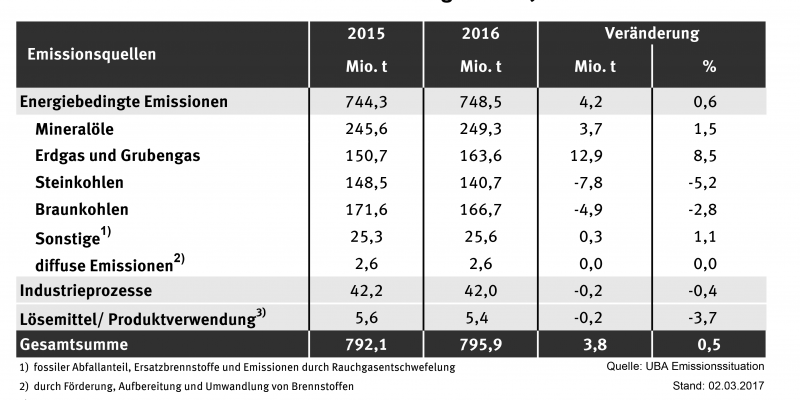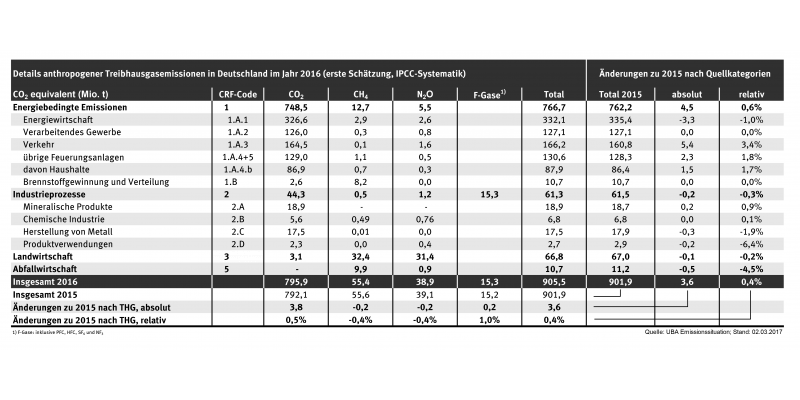In contrast to road transport, the ton-kilometre performance of environmentally friendly rail traffic decreased by .5 per cent. This is due to truck tolls which are set too low and cheap fuel prices. The latter made for an increase of 3.5 per cent in diesel fuel sales (petrol was +2 per cent). Ms Krautzberger said: "A turnaround in the transport sector can be driven by extending the toll to the whole of the road network and to all lorries. This way, the environmental damage of greenhouse gases and noise can be charged to the polluters more easily. "
The aviation sector also reported considerable growth in passenger kilometres and freight volume. This is another reason for the increase in GHG in the transport sector.
“As long Germany’s transport sector continues to benefit from environmentally harmful subsidies worth an annual 28.6 billion euros, there will be no change in this trend”, said Ms Krautzberger: “The tax advantage for diesel fuel and other privileges must be gradually phased out.”
The cooler weather and the leap day were clearly reflected in emissions from private households. The temperature trends and concurrent greater demand for heat energy also resulted in higher emissions in the private households and small-scale consumers sector (1.5 million tons (+1.7%)).
In contrast, carbon dioxide emissions in the energy industry were further reduced despite a slight rise in electricity production. For reasons of price, more low-emissions natural gas was used for the first time since 2010, thereby replacing other fossil fuels. The production of electricity from renewable sources was only slightly higher than in the previous year; power production based on wind and solar energy decreased due to weather conditions.
Economic development in 2016 raised the gross domestic product by 1.9%, with variable production trends in the individual industrial sectors. Gross refinery production increased, whereas steel production and therein the pig iron production in particular, was slightly weaker. Chemical production remained stable. The slight rise in emissions of fluorinated greenhouse gases can be traced back to the use and disposal of commercial refrigeration units and mobile air conditioning systems.
GHG emissions mostly stagnated in the agriculture sector. The waste sector reported a decline of nearly half a million tons CO2 equivalents. This steady decline is traceable to the ban on disposal of biodegradable materials which continues to positively influence the climate impact.
The present results represent initial detailed estimates. They are derived from a system of modelling and extrapolation of trends based on detailed estimates published in January for 2015. The data comes from initial survey data for 2016 published by the Working Group on Energy Balances (Energy Balances Group), a range of official monthly statistics on energy consumption, production figures from industrial associations, and other additional information (e.g. degree day figures). This calculation method reduces the accuracy of estimates compared to those in the detailed calculations.
Initial verified emissions data for the sub-sector of installations in the energy sector and industry subject to emissions trading is published every year on 1 April. In 2015 nearly 51 per cent of total GHG emissions in Germany originated in the sectors subject to emissions trading. The German Emissions Trading Authority publishes this data in a detailed report in May every year. UBA will be publishing the complete official inventories of GHG emissions in Germany for 2016 on 15 January 2018, the date on which the information is also communicated to the European Commission.
 Click to enlarge
Click to enlarge



